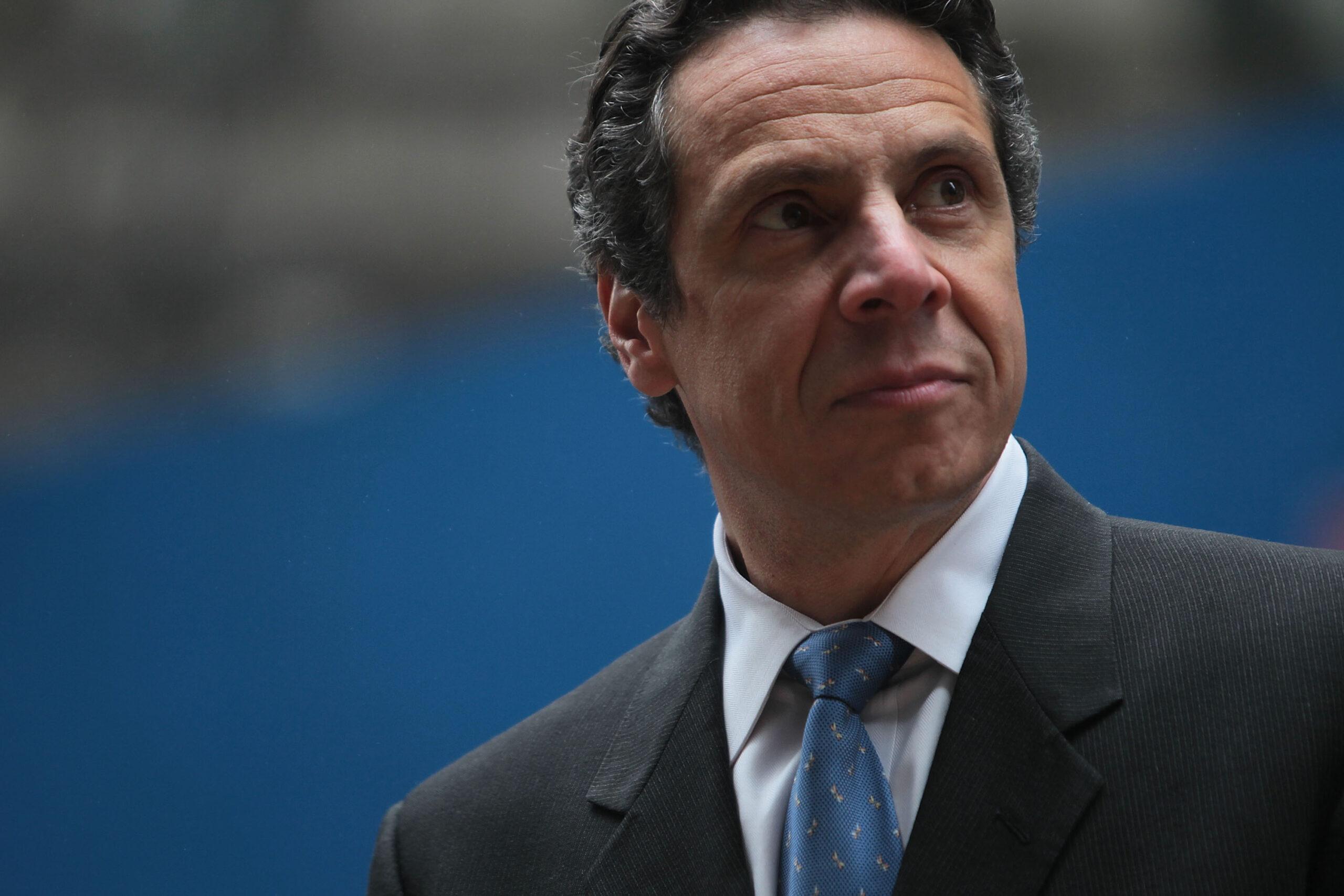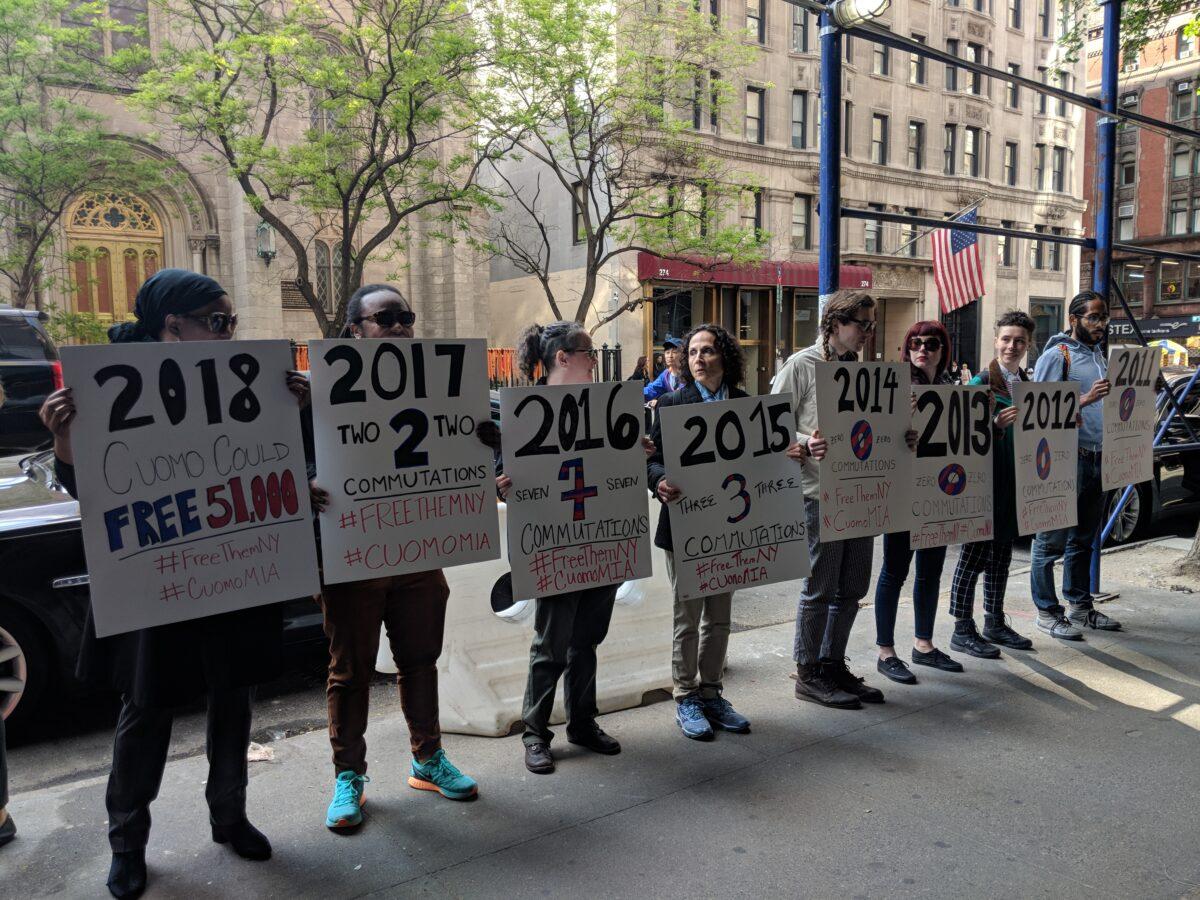Cuomo the Merciless
New York’s Democratic governor has granted only a trickle of commutations, fewer than many of his Democratic and Republican predecessors.

In 2015, New York’s governor, Andrew Cuomo, announced the creation of an Executive Clemency Bureau to identify people in the state’s prison system who might be worthy of commutation. The announcement sparked hope among the system’s approximately 50,000 prisoners, their families, and advocates that they might soon rejoin their families.
Clemencies can take two forms. There’s a commutation, or the shortening of a person’s prison sentence, which allows an incarcerated person an earlier parole hearing or an immediate release. The other form is a pardon, which expunges a person’s criminal conviction altogether (which governors have used to prevent people from being deported). Governors have the power to issue an unlimited number of clemencies.
What does being worthy of commutation entail? According to Cuomo’s criteria, an applicant must prove that he or she has “has made exceptional strides in self-development and improvement; has made responsible use of available rehabilitative programs; has addressed identified treatment needs; and the commutation is in the interest of justice, consistent with public safety and the rehabilitation of the applicant.”
Cuomo’s criteria also requires that a person have been sentenced to at least one year in prison, that they had already served at least half of that sentence, and are not scheduled to appear before the parole board within the next year.
Cuomo encouraged attorneys and law firms to donate pro bono hours to help incarcerated people prepare their petitions. Many heeded the call and devoted significant time and resources to helping dozens of people imprisoned across the state.
But these efforts have not proved fruitful.
In December 2016, Cuomo had granted only seven commutations. One was to Judith Clark, a former Weather Underground member initially sentenced to 75 years to life; her commutation allowed her to appear before the parole board immediately instead of waiting until 2056. (Clark was denied parole and remains in prison.) Another commutation granted an immediate release to Valerie Seeley, a domestic violence survivor sentenced to 19 years to life for the fatal stabbing of her abusive boyfriend in 1998, an act that she has always maintained was in self-defense.
About one year later, Cuomo’s office announced more commutations—this time, it was only to two men. He has not granted any clemencies since then. His office did not respond to The Appeal’s queries about the possibility of future commutations.
Cuomo has, however, issued a greater number of pardons to those who have already served their time. He has granted 140 pardons to adults who were convicted of nonviolent felonies as 16- and 17-year-olds, thus expunging their felony records. He also granted pardons to 18 others who might face deportation because of a criminal record.
Kathrina Szymborski oversees the pro-bono commutation efforts at the law firm Patterson Belknap Webb & Tyler, which has donated the equivalent of $1.5 million in pro-bono hours to clemency applicants. She and her colleagues rejoiced when one client, 42-year-old Michael Flournoy, who had served 21 years of a 25-to-50-year sentence, received clemency in December 2017. But, she told The Appeal, “we have many deserving clients whose applications are still pending. Our clients are dedicated and hard-working, so they continue to gather letters of support, receive stellar job reviews, and complete rehab and educational programs. They’re trying to be part of society and enrich their communities as best they can from where they are, some by mentoring other prisoners, others by writing articles for publication in various newspapers and magazines. We feel that they’ve served their time and their further incarceration serves no purpose, so we find the lack of action on these applications disappointing.”
While Szymborski notes that her clients remain hopeful, Cuomo’s lack of action has disillusioned others. Steve Zeidman is the director of the Criminal Defense Clinic at the CUNY School of Law as well as Clark’s attorney. While the clinic is working with about 25 people on clemency applications, he has received hundreds of requests for help. “For so many people, clemency offered the hope that after decades of punishment their quantifiable and undeniable evidence of personal growth and transformation would be recognized,” he told The Appeal, “that they would be given the chance to live outside the prison walls. As I have now been told on several occasions by those who have had their hopes of clemency reduced to pipe dreams, false hope is cruel; it is worse than no hope.”
Some advocates charge that Cuomo’s criteria are too stringent. “Cuomo, under the state constitution, has complete discretion and ultimate power to commute people’s sentences at any time and for any reason,” points out Mariame Kaba, a founding member of Survived and Punished, a network that works with criminalized and imprisoned survivors of gender-based violence. “We are perplexed by the rules he set for himself. They’re incredibly narrow and leave out an incredible number of people.”

Moreover, outreach has been haphazard. While word of Cuomo’s commutations initiative spread quickly in some men’s prisons, many incarcerated in women’s prisons were unaware of it. “We’re in direct contact with 30 people inside women’s prisons,” stated Kaba, who noted that three-quarters of those women had not heard of the governor’s clemency initiative. Seeley, the only adult domestic violence survivor among the governor’s 12 commutations, told The Appeal that, between 2015 and her release in January 2017, she had seen no posters or announcements about the clemency project. More recently, 61-year-old Melisa Schonfield, who is serving a five-year sentence after attempting to hire an undercover officer to shoot her daughter’s abusive ex-husband, only learned about the governor’s project—and the possibility of pro-bono assistance—after her family paid a private attorney to help with her clemency petition. Schonfield, whose health has been declining while in prison, told her daughter that there were no announcements about the governor’s project in the prison’s common areas or even in the law library, where she recently spent many hours working on her application.
Cuomo’s record on commutations contrasts poorly with that of another governor of a deep blue state. In 2017 and 2018 alone, California’s departing governor, Jerry Brown, issued 49 commutations, enabling more than a dozen people sentenced to life without parole to become eligible for parole and—for at least two women who survived domestic violence —walk out of prison after decades behind bars. Even John Bel Edwards, Democratic governor of the very red state of Louisiana, has issued 22 commutations during his first year in office, 10 more than Cuomo has issued during his entire 7½ years as governor.
Perhaps most notably, the number of Cuomo commutations are small by his state’s historical standards. During his two terms from 1975 to 1982, Governor Hugh Carey granted 155 commutations. While the number of commutations went into steep decline after Carey’s tenure, his successor, the current governor’s father, Mario Cuomo, still issued 37 commutations. Even Republican governor George Pataki, who eliminated parole for violent felonies and reinstated the death penalty, issued 32 commutations. In other words, not that long ago, commutations were much more commonplace than Cuomo is allowing them to be now. And advocates are pushing for them to become more routine again. “The governor can free anyone at any time for any reason,” Kaba reminded. She notes that although Survived and Punished focuses on supporting survivors of gender-based violence, “we would be happy to see him free anyone at this point.”
“Surely, there are numerous people among the 52,000 in New York State prison who merit clemency; who are deserving of that measure of mercy,” said Zeidman, Clark’s attorney. “Consider the 630 people serving life sentences for crimes committed when they were 17 or younger. Or the more than 9,000 people serving life sentences, many of whom will die long before they ever see a parole board. Or the many elderly and infirm people behind bars. Or those who endured years of intimate partner violence.”
Seeley, who endured eight years of abuse from her boyfriend before stabbing him in self-defense, agrees. “I appreciate that Cuomo granted me clemency in 2016,” she said. If not for the governor’s action, Seeley would still be in prison awaiting her first parole hearing, which was scheduled for September 2018. Instead, in January 2017, she was able to reunite with her daughter, two grandchildren, and 90-year-old mother. But, continued Seeley, noting that the governor’s last commutations were for men, “I would like to see him grant more clemency to women and really give them a second chance.”
